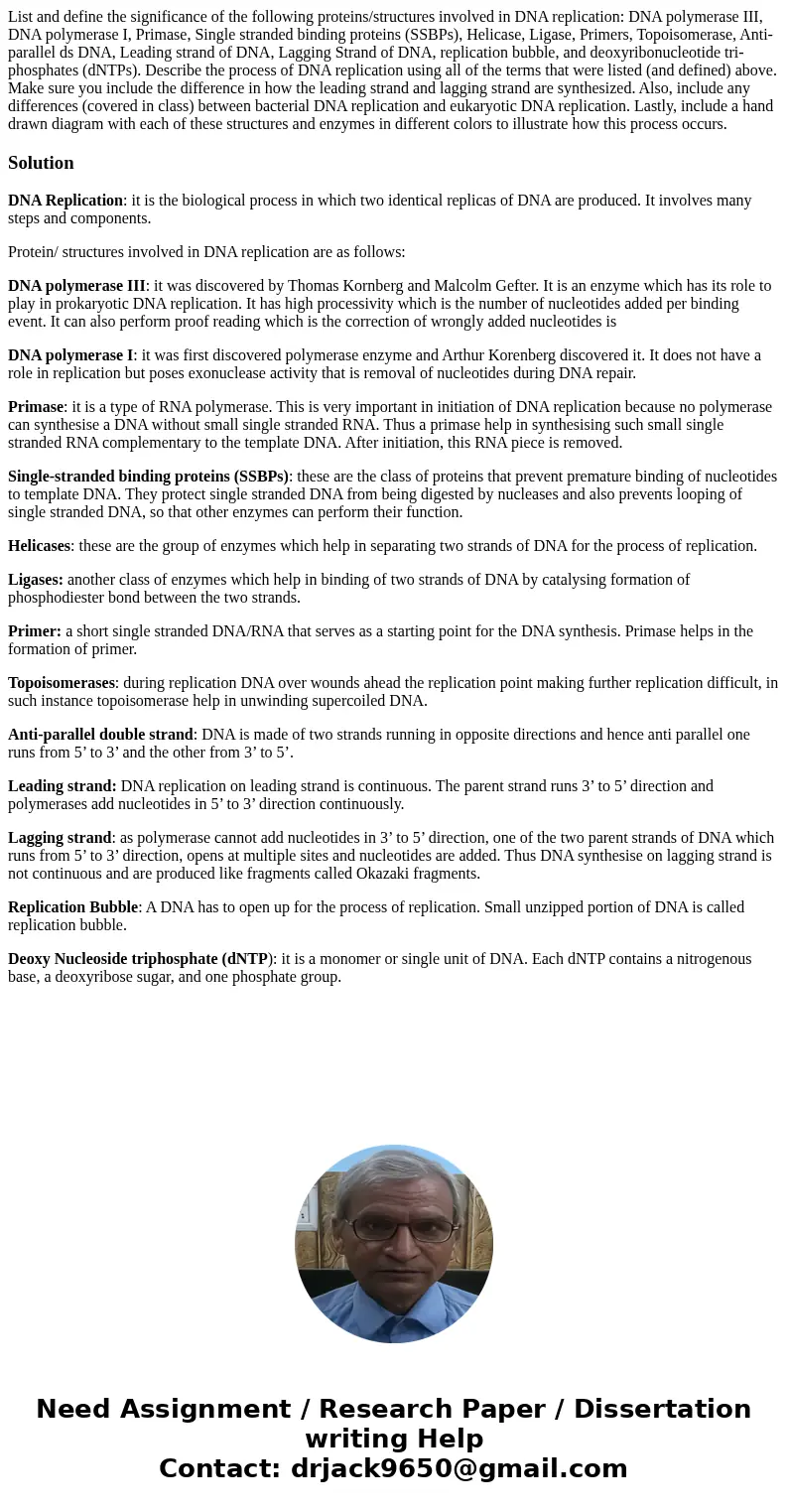List and define the significance of the following proteinsst
Solution
DNA Replication: it is the biological process in which two identical replicas of DNA are produced. It involves many steps and components.
Protein/ structures involved in DNA replication are as follows:
DNA polymerase III: it was discovered by Thomas Kornberg and Malcolm Gefter. It is an enzyme which has its role to play in prokaryotic DNA replication. It has high processivity which is the number of nucleotides added per binding event. It can also perform proof reading which is the correction of wrongly added nucleotides is
DNA polymerase I: it was first discovered polymerase enzyme and Arthur Korenberg discovered it. It does not have a role in replication but poses exonuclease activity that is removal of nucleotides during DNA repair.
Primase: it is a type of RNA polymerase. This is very important in initiation of DNA replication because no polymerase can synthesise a DNA without small single stranded RNA. Thus a primase help in synthesising such small single stranded RNA complementary to the template DNA. After initiation, this RNA piece is removed.
Single-stranded binding proteins (SSBPs): these are the class of proteins that prevent premature binding of nucleotides to template DNA. They protect single stranded DNA from being digested by nucleases and also prevents looping of single stranded DNA, so that other enzymes can perform their function.
Helicases: these are the group of enzymes which help in separating two strands of DNA for the process of replication.
Ligases: another class of enzymes which help in binding of two strands of DNA by catalysing formation of phosphodiester bond between the two strands.
Primer: a short single stranded DNA/RNA that serves as a starting point for the DNA synthesis. Primase helps in the formation of primer.
Topoisomerases: during replication DNA over wounds ahead the replication point making further replication difficult, in such instance topoisomerase help in unwinding supercoiled DNA.
Anti-parallel double strand: DNA is made of two strands running in opposite directions and hence anti parallel one runs from 5’ to 3’ and the other from 3’ to 5’.
Leading strand: DNA replication on leading strand is continuous. The parent strand runs 3’ to 5’ direction and polymerases add nucleotides in 5’ to 3’ direction continuously.
Lagging strand: as polymerase cannot add nucleotides in 3’ to 5’ direction, one of the two parent strands of DNA which runs from 5’ to 3’ direction, opens at multiple sites and nucleotides are added. Thus DNA synthesise on lagging strand is not continuous and are produced like fragments called Okazaki fragments.
Replication Bubble: A DNA has to open up for the process of replication. Small unzipped portion of DNA is called replication bubble.
Deoxy Nucleoside triphosphate (dNTP): it is a monomer or single unit of DNA. Each dNTP contains a nitrogenous base, a deoxyribose sugar, and one phosphate group.

 Homework Sourse
Homework Sourse